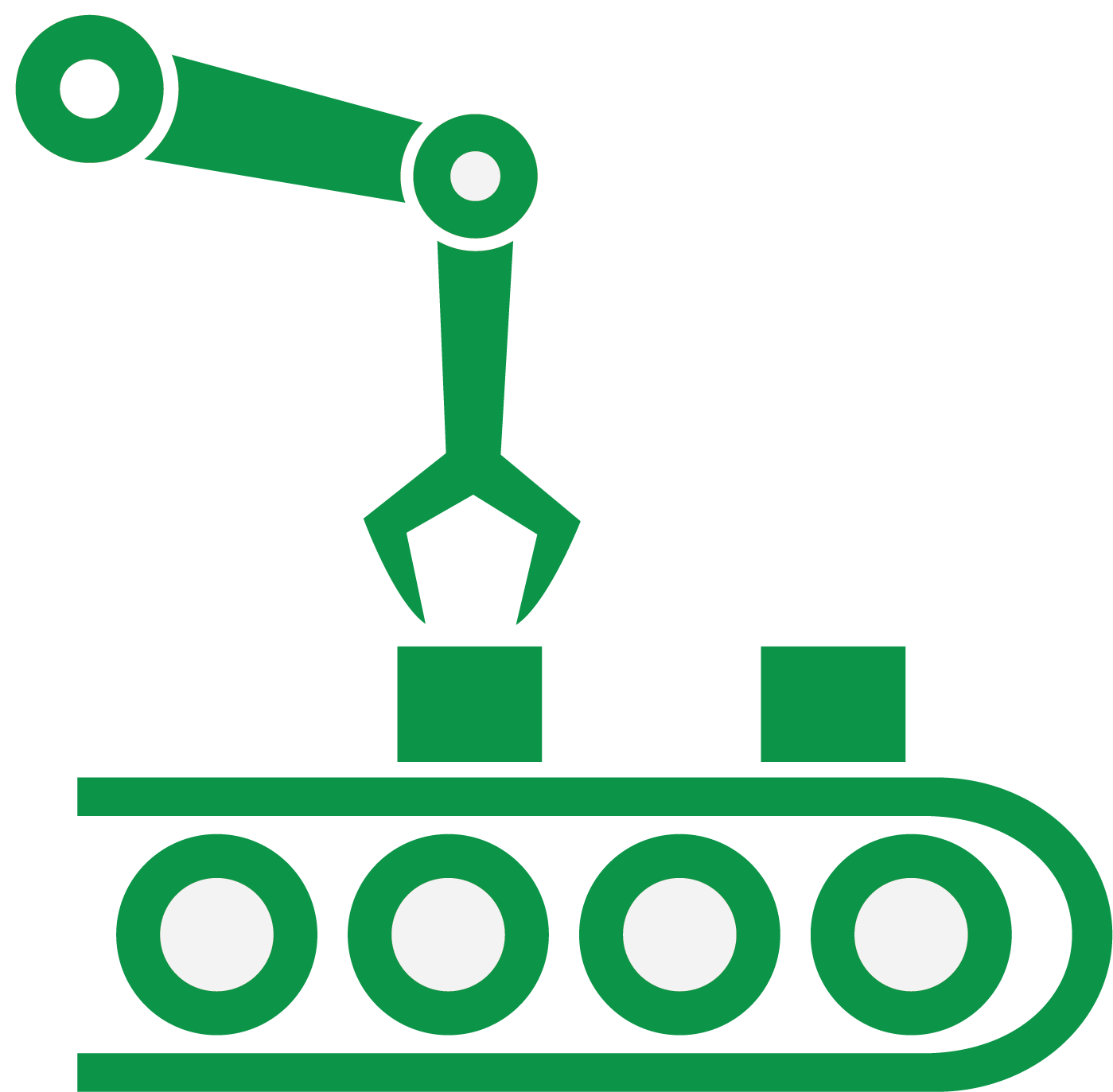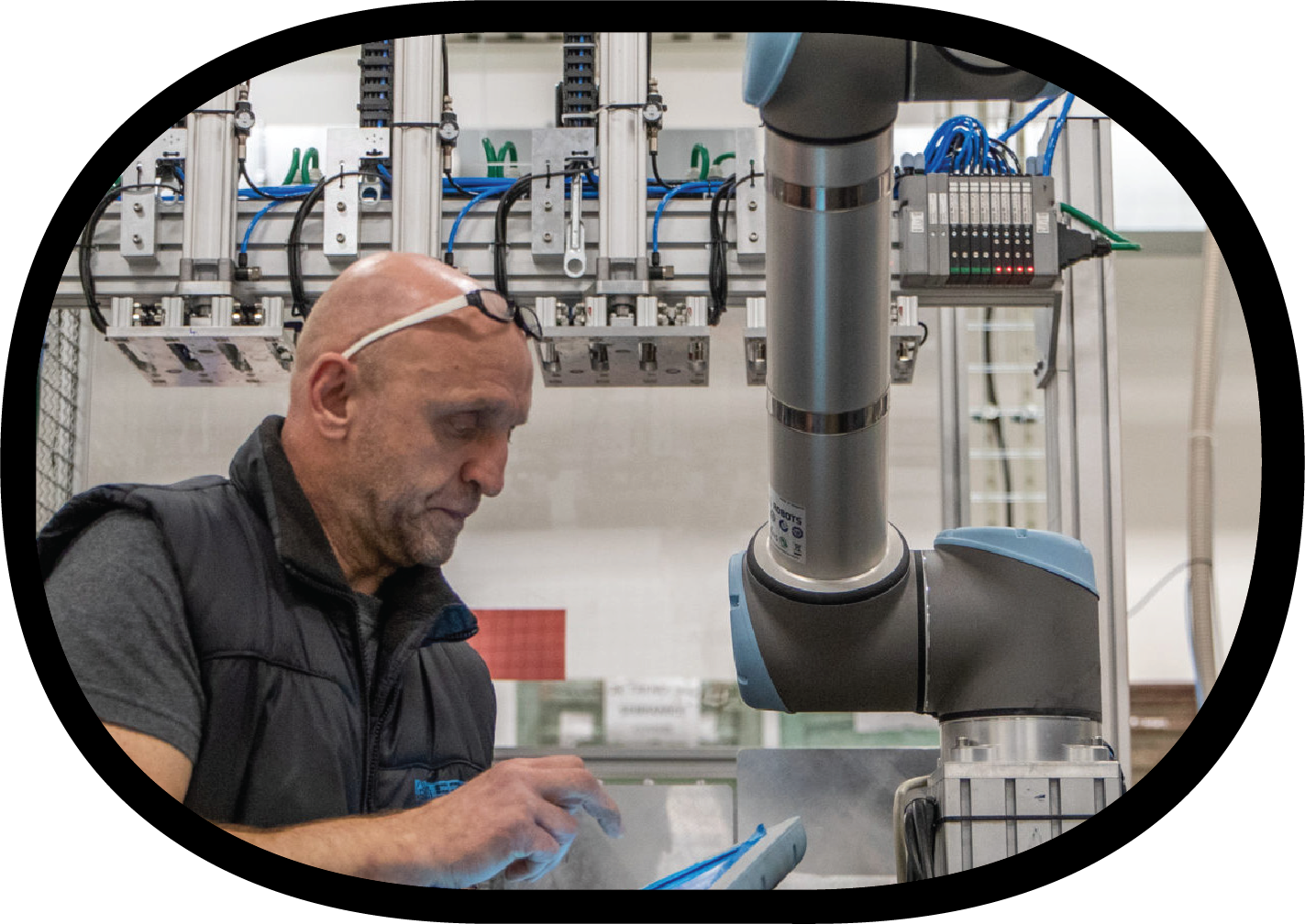
robots.
Why CobotWorks Exists.
CobotWorks.org provides you with trusted, unbiased resources for everything related to collaborative robots. Through our platform, our experts guide you with comprehensive comparisons and real-world case studies, helping you make informed decisions and integrate cobots effectively and responsibly into your operations. Whether you’re just starting out and exploring automation for the first time or already using cobots on the factory floor, our guides, tools, and stories help you make smart decisions—all without the sales pressure.

What is a Cobot?
Understand the difference between industrial robots and collaborative robots—and why it matters.

What Are the Benefits of a Cobot?
Discover how cobots can enhance your operations by improving safety, boosting productivity, and offering flexible automation solutions.

Use Cases by Industry
See how cobots are being used in food, automotive, welding, packaging, and more.

ROI & Cost Tools
Compare costs, download ROI calculators, and learn how to justify automation.

Cobot Safety Center
Learn how cobots are designed to work safely alongside humans, with real-world examples.

Resource Library
Browse expert blogs, how-to guides, checklists, and real-world case studies.
What is a Cobot
and Why Are
Manufacturers
Using Them?
A cobot, or collaborative robot, is a type of automation specifically designed to work safely with humans—requiring no cages or complicated programming. In contrast to traditional industrial robots, cobots are flexible, affordable, and ideal for small-to-midsize manufacturers. As a result, companies implement them to address labor shortages, repetitive tasks, and safety risks—all while delivering ROI fast.
If you've ever asked:
![]() How long does it take to install a cobot?”
How long does it take to install a cobot?”
![]() Can a cobot replace a $20/hr factory worker?”
Can a cobot replace a $20/hr factory worker?”
![]() Are cobots safe for people?”
Are cobots safe for people?”
![]() What are real manufacturers doing with cobots?”
What are real manufacturers doing with cobots?”
...you're in the right place

Try the Robot ROI Calculator
Compare your labor costs with cobot deployment in minutes
Real Life Cobot Uses
Companies like yours automating safely

Ask the Experts. Ask CobotWorks.

We Answer the Real Questions Manufacturers are Searching For.
Yes. Manufacturers prioritize safety when engineering collaborative robots (cobots), enabling them to work directly alongside humans without requiring physical barriers. These robots meet rigorous safety standards, including ISO/TS 15066, which provides clear guidelines for safe human-robot interaction.
When applications involve hazardous tasks or environments, you may need to implement additional safety measures to protect workers. With the right safety measures in place, cobots help improve productivity while maintaining a safe work environment.
Collaborative robots (cobots) are designed to work safely alongside humans, automating a wide range of tasks to enhance productivity and reduce strain. Thanks to their versatility, they can perform repetitive and precision-demanding jobs, freeing up human workers for more complex tasks.
Common Tasks Cobots Can Automate:
Machine Tending: Cobots can load and unload parts from machines, such as CNC machines, ensuring continuous operation without human intervention.
Assembly: In addition, they assist in assembling components, including tasks like screwdriving and part insertion, with high accuracy.
Welding & Soldering: Moreover, cobots are used in welding and soldering applications, providing consistent quality and precision.
Inspection & Quality Control: Equipped with advanced vision systems, cobots can inspect parts for defects, helping ensure quality standards are met.
Packaging & Palletizing: Furthermore, they can automate packing and palletizing processes, improving efficiency in packaging lines.
Material Handling: Finally, cobots can transport materials within a facility, reducing manual labor and increasing throughput.
These tasks represent just a glimpse of what cobots can accomplish. Their adaptability and ease of integration make them suitable for various industries, including manufacturing, electronics, pharmaceuticals, and more. Whether you’re looking to automate a single task or completely transform your workflow, cobots offer a flexible and scalable solution to meet your needs.
Collaborative robots (cobots) are designed for ease of maintenance, which makes them a practical choice for businesses seeking reliable automation solutions. Although they don’t require extensive upkeep, providing regular attention ensures optimal performance and longevity.
Routine Maintenance Tasks
Daily Inspections: Before each operation, perform visual checks for any visible damage or wear.
Cleaning: Additionally, regularly clean the robot’s joints, sensors, and optics to prevent dust and debris buildup.
Lubrication: To maintain smooth operation, apply lubricant to moving parts as per the manufacturer’s recommendations.
Software Updates: Furthermore, keep the robot’s software up to date to benefit from performance enhancements and security improvements.
Scheduled Maintenance
Biannual Service Checks: Every six months, conduct comprehensive inspections to proactively address any potential issues.
Component Replacements: When needed, replace consumable parts, such as flat rings or seals, to maintain efficiency.
By following these maintenance practices, cobots can operate efficiently, minimizing downtime and maximizing productivity. For more detailed guidelines, refer to the manufacturer’s manual or consult with a certified service provider.
Do You Need a Systems Integrator for Your Cobot Project?
Your specific application, internal capabilities, and project complexity determine whether you should engage a systems integrator for your collaborative robot (cobot) project.
When You Might Not Need an Integrator
Many small and medium-sized enterprises (SMEs) successfully deploy cobots without hiring external integrators. Cobots offer user-friendly designs with intuitive interfaces and built-in safety features, allowing operators to configure and program them with minimal training. If your team has basic mechanical and programming skills and you’re handling straightforward tasks like machine tending, assembly, or inspection, a do-it-yourself (DIY) approach can save costs and improve efficiency.
When an Integrator Adds Value
For complex applications—such as integrating a cobot with existing machinery, designing custom end-effectors, or meeting safety compliance standards—professional integrators deliver critical expertise. They manage system design, programming, and safety assessments, ensuring seamless and compliant integration. If your team doesn’t have the time or experience to handle these tasks, an integrator can help you avoid costly mistakes and keep your project on track.
Exploring Alternative Support Options
If you don’t want to hire a full-scale integrator, consider working with value-added distributors or “lean integrators.” These professionals provide focused support, including training, equipment selection, and application design, without the overhead of traditional integrators. They help you set up your cobot and offer ongoing support as your needs evolve.
Ask a Question
Didn't get the answer to your question? Tell us what it is and we will get you the answer.

